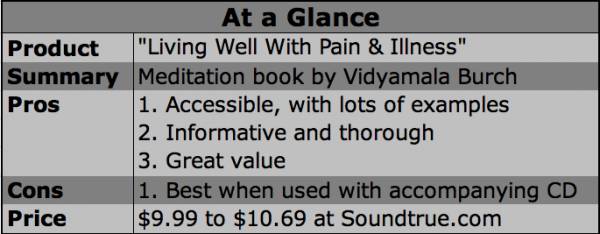
Each thing –
Each stone, blossom, child – is held in place.
Only we, in our arrogance,
Push out beyond what we belong to
For some empty freedom.
If we surrendered to earth’s intelligence
We could rise up, like rooted trees…
This is what the things can teach us: to fall,
Patiently to trust our heaviness.
Even a bird has to do that
Before he can fly.
-Rainer Maria Rilke
Studies have shown that meditation has significant benefits for people who deal with chronic pain. This appears to be true for people of all age groups. For example, a 2012 study suggested that older adults dealing with pain from Postherpetic neuralgia experienced significant improvement with daily meditation. Likewise, another study conducted in June 2012 found that mindfulness meditation helps children who live with chronic pain. I’ve learned a lot about meditation for acute pain in my training to be a doula, since it is well known for its benefits during labor and delivery. At this point, nearly everyone seems to be in agreement that meditation has benefits for many people who deal with pain of any kind.
That’s all well and fine, but how exactly would you apply that on a practical level? If you have found yourself asking that question, whether for your own chronic pain or to help someone else, the book Living Well With Pain and Illness is for you. Author Vidyamala Burch has put together a tremendous resource for anyone who is interested in how to use meditation to deal with chronic pain.
The book is divided into four parts. Part I, called “A New Relationship With Pain” details the author’s own story of her experience with chronic pain, which began early in life with a spinal injury and intensified after a car accident that left her with a whiplash, a crushed collarbone, a concussion, sprained wrist, and back pain that would never go away completely. She describes how her relationship with pain was transformed after a particularly intense experience after a hospital procedure:
Throughout the long hours of the night I felt impaled on the edge of madness, and it seemed that two voices were speaking within me. One was saying, I can’t bear this. I’ll go mad. There’s no way I can endure this until morning. But the other replied, “You have to bear it, you have no choice. They argued incessantly, like a vice growing tighter every second. Suddenly, out of the chaos came something new. I felt a powerful clarity, and a third voice said, You don’t have to get through until morning. You only have to get through the present moment.
That realization transformed Burch’s relationship with her pain. All that ‘live in the present’ stuff we read in meditation articles – Burch has experienced that, as she says, “in the marrow of my bones.” That personal awareness is what makes this book such a rich resource. When dealing with pain, empathy goes a much longer way than book knowledge, and Burch has both.
The second part of Burch’s book, called “Mindfulness and Healing,” is an examination of what mindfulness means and how we can obtain it, and flows well into Part 3, “Coming Home to the Body.” As Burch says, “Mindfulness practice is like any other training. If you want to become an athlete, you need to develop certain muscles so you can run with ease; to cultivate mindfulness you must train your awareness so that it becomes an increasingly reliable source of strength and stability.” Burch provides 5 concrete steps to obtaining that strength, and also describes the important distinction between cure and healing in Chapter 6.
In Parts 4 and 5, Burch delves more deeply into meditation. She examines the history of meditation in Western medicine, provides detailed descriptions of typical meditation sessions, and explains how meditation and pain work so well together. For my own purposes of working with women in labor, I found Chapter 14 on the mindfulness of breathing to be especially helpful, since it provides some concrete ways to train the body to connect to the present moment.
Burch concludes her book with a section called “Mindfulness At All Times.” I love the section on the 3 minute breathing space. Burch recommends setting aside regular 3 minute breathing space periods into the day to connect with your body and breath throughout the day. As a mom of two young children, I can personally vouch that this recommendation is not only beneficial for people who live with chronic pain, but also for people who live with the normal stresses of everyday life.
Throughout her book, Burch makes her advice applicable and relatable with real life examples, as well as diagrams and illustrations of postures and other information. I also liked how she integrates quotes by poets, meditation teachers, and other figures throughout the book. She got brownie points from me because she used quotes from one of my favorite poets, Rainer Maria Rilke, in two parts of the book.
Burch also includes a suggested program, samples of pleasant/unpleasant diaries, which she recommends for patients dealing with chronic pain, and a comprehensive resources section in the appendices. I also reviewed the CD that Burch created with Joshua Leeds to accompany the practices she outlines in her book.
“Living Well With Pain & Illness” is available in softcover for $10.69, or digital book for $9.99, at Amazon






